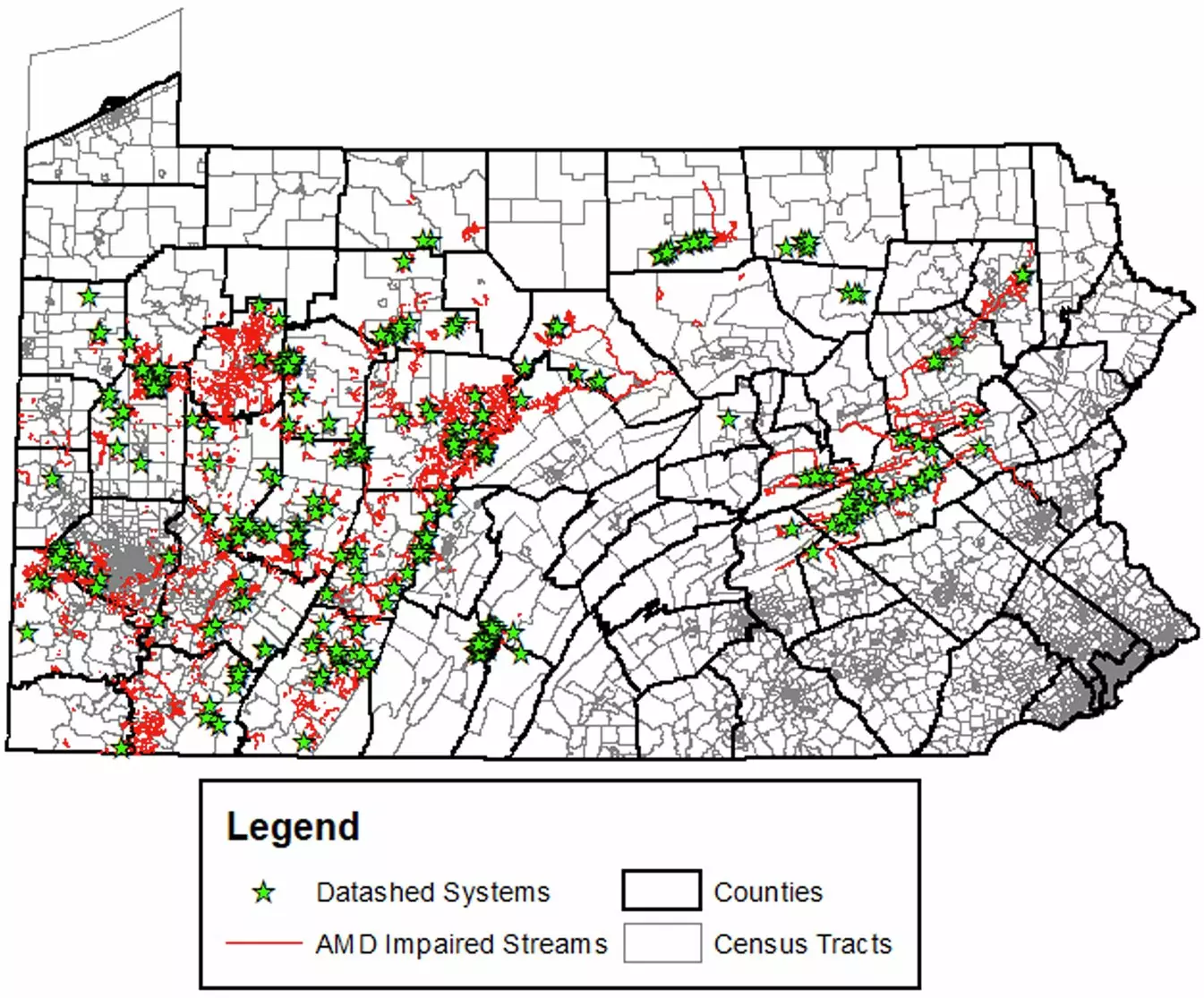Abandoned mine drainage (AMD) is a persistent environmental issue that plagues Pennsylvania, significantly impacting both ecosystems and the health of nearby communities. As a result of decades of coal extraction, the state is left with over 5,600 miles of streams that are either heavily impaired or completely unlivable due to toxic run-off. Recent research from the University of Pittsburgh highlights not only the enormity of this problem but also the critical need for adequate funding and innovative policy measures. While the study illustrates that existing treatment systems have made strides in protecting more than 1,000 miles of waterways, it indicates a dire discrepancy between the current financial allocations and the actual needs for long-term solutions.
Current Efforts and Their Limitations
Over the last 35 years, collaboration between the Pennsylvania Department of Environmental Protection (DEP) and various watershed groups has led to the establishment of over 300 treatment systems aimed at neutralizing the acidic nature of AMD before it contaminates local streams. This has been achieved primarily through state and federal funding, underlining the importance of civic engagement and governmental support in tackling environmental degradation. Nonetheless, the study brings to light a glaring inadequacy in the existing funding levels. For every kilometer of treated stream, the investment has amounted to around $5,700 per year, yet there remain significant stretches of degraded waterways that lie untreated.
This pressing funding issue is compounded by the need to address various other environmental hazards linked to abandoned mines, including sinkholes and unstable highwalls. The total estimated cost for Pennsylvania to repair and maintain its water systems and mine vulnerabilities stands at an alarming $5.4 billion. This figure emphasizes that, while progress has been made, there is still a long and arduous road ahead to achieving a sustainable solution for all affected waterways.
Jeremy Weber, a key figure in the research, also notes a recent shift in environmental policy that may yield financial support for the cleanup of legacy pollution, job retraining, and local economic development. The 2021 Infrastructure and Investment and Jobs Act allocated $16 billion specifically to address issues stemming from abandoned mines, putting a spotlight on the pressing need to restore damaged communities and environment. However, Weber raises a crucial question: who stands to benefit from these investments?
This inquiry prompts additional scrutiny over the allocation of resources within communities severely impacted by AMD. The study indicates that the neighborhoods most afflicted are among the poorest in Pennsylvania—average household incomes in these areas are approximately 30% lower than those in unaffected regions. This socioeconomic disparity warrants greater attention, as the health of local streams directly correlates to the overall well-being of these vulnerable communities.
Despite the challenges associated with long-term remediation strategies, data indicates success in existing treatment systems. A significant improvement in water quality—illustrated by an average pH level of inflow water at 4.3 (comparable to the acidity of tomato juice) versus a more balanced outflow pH of approximately 6—points to the efficacy of these initiatives. The research encourages further investment by revealing that the advances achieved through present treatment systems could serve as a model for future projects if properly funded.
However, the urgency remains: nearly 6,500 miles of streams continue to require protection from AMD, with a substantial portion of these areas lacking any remediation systems. This ongoing environmental threat poses serious risks, not only to aquatic life but to the health of nearly 2.4 million Pennsylvanians whose livelihoods are intertwined with these vital ecosystems.
As Pennsylvania grapples with the long-term ramifications of its coal mining legacy, the evidence presented by the University of Pittsburgh research underscores an urgent call to action. The state’s approach to AMD remediation must evolve to match the growing need for comprehensive solutions that prioritize both environmental restoration and socioeconomic equity. With insufficient funding and mounting liabilities, Pennsylvania stands at a crossroads: a commitment to invest in sustainable water quality initiatives could transform affected communities while preserving the natural landscape for future generations. The time has come for a concerted effort that not only acknowledges the scale of the problem but seeks to forge a lasting and equitable resolution.


Leave a Reply